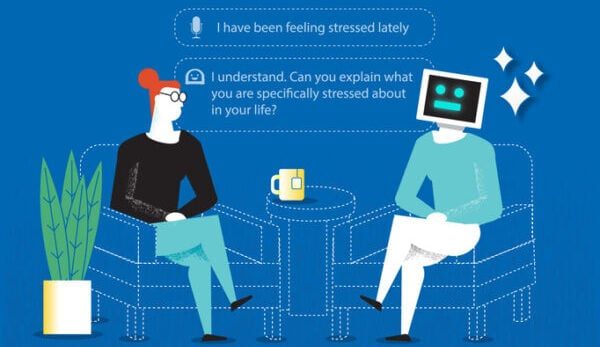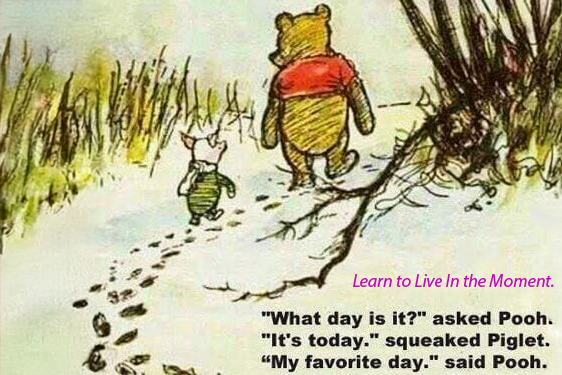
Many of the mystical experiences I’ve had have been as a child.
I was in my parents’ bed. My father went into the closet to get clothes. As he came out, I saw a spinning ball of blue flame above his head. It wasn’t scary, just fascinating. I remember this vividly, although I don’t remember anything before or after.
Sometime between ages 3 and 6, I remember feeling immersed in and surrounded by the brightest of white lights. I don’t recall if I had my eyes open or closed, although I was standing up. I felt completely awash in peace.
Another experience was less pleasant. I had a bad dream and went down the hall to my parents’ room. Close to their door, I felt small “animals” running around me, entangling my feet. They appeared as light and were see-through.
“George” was a mixed experience. He wasn’t my imaginary friend. He was a huge man who “appeared” in my bedroom corner one night. My memory is of awakening to see him in the corner, and not feeling afraid. Many years later I decided to consider him a guardian.
I’m not schizophrenic nor delusional, and wasn’t in childhood. I am bipolar ll, but that diagnosis does not include psychotic episodes, like bipolar l does. My experiences may have been dreams, or they may have been brief perceptions of a higher frequency, spiritual reality.
What about children I’ve worked with as a therapist and as a school counselor
How do we determine the difference in children having a spiritual experience and those developing schizophrenia or other conditions such as bipolar l, with delusions, psychoses, and/or hallucinations?
While I was a school counselor I encountered a few children who reported, or whose parents reported them, hearing or seeing things. As a therapist, I’m bound by my ethics and training to always consider whether a child is suffering from a schizophrenic-like disorder or is having depression or mania-induced auditory and/or visual hallucinations. It’s important to investigate all possible causes and to refer the child to a psychiatrist for situations that appear to be medically based, in order to make no mistakes in treatment.
One absolute way to determine if the child is having auditory hallucinations caused by a mental illness is if the voice tells them to do something dangerous, or harmful to themselves or others. Visual experiences are more complicated if there are no voices.
Experiences the child did not perceive as frightening
One child saw a woman often, even seeing her in the classroom. She wasn’t afraid of her and described her as having long black hair, and a long, blue velvet dress. She sounded Native American.
The child wasn’t afraid, but when she told her parents, they were horrified. They sent her to me. We talked at length about this visualization and her lack of fear. She felt the woman was guarding her. Her parents insisted that she “stop” seeing the woman. This sweet little girl tried her best to “stop” and it was heartbreaking to talk with her about it and see her palpable guilt.
I recommended her parents take her to a psychiatrist but they were religious and didn’t believe in medication. I wanted a second opinion from an M.D. to help me to help the child.
The parents decided they didn’t want her talking with me about it anymore. They had hoped it was behavioral, and that somehow I could “talk her out” of seeing the woman.
Several years later she saw me in public and came up to give me a hug. She said, in a too-bright voice,
“I don’t see the woman anymore.”Another child described cherub-like beings flying around his room every night. Like the child who saw the woman, he wasn’t afraid, but his parents were worried. He thought the flying angels were funny, and said he’d seen them since he was a baby. They were comforting to him. Were they hallucinations? I don’t know. And then there were the undeniable hallucinations
A fifth-grade boy was sent to me by his teacher. He talked of seeing ghosts. When I conferred with his mother, she confirmed his story that the family had moved from a haunted house and that his father saw ghosts, too.
Unlike the parents of the two girls, she wasn’t concerned.
However, as he and I talked more, the stories and his delivery became more concerning. He said he saw demons, and that one of them told him to jump from his bed into the moving ceiling fan.
One day, in a foreboding voice, he told me,
There is a demon in the room with us now.”I answered calmly,
“I’m not afraid of demons, but I’d rather it leave.”He responded,
“It says it won’t leave. I can’t make it.”I said,
“Fine, we’ll just ignore it then.”It was obvious to me that he had serious hallucinations, both visual and auditory. But I could never convince his mother to take it seriously or take him to a psychiatrist.
Years later, when he was in high school, he joined ROTC. He became friends with a boy who lived across the street from me. One day he came over to say hello, to tell me he was doing well. I don’t know if he was still hearing and seeing things, and his interest in the military was concerning. I was no longer his counselor, so there was nothing I could do if he was still hallucinating.
Outside of my work, with my son’s friends who’ve asked and whose parents agreed, I’ve taught them to meditate or take them on past-life journeys. I always explain past-life journeys to people as possible metaphors for their current existence. Many children are naturals at guided imagery and meditation. They approach them with open hearts and souls.
None of the ones I did this with outside of a therapy setting had upsetting experiences, nor did they hallucinate. If I had been able to do longitudinal research on these, and the children I saw in therapy settings who did see and hear things, I might have a conclusion. But I don’t.
I only know my own childhood experiences seemed and felt real. And in general, they brought me peace, not fear.
I’m not schizophrenic nor delusional, and wasn’t in childhood. My experiences may have been dreams, imagination, or they may have been brief perceptions of a higher frequency reality.
The boy who saw demons was observably disturbed and disturbing. He had an intense, yet flat, affect. Did he “see” demons and therefore need antipsychotics his mother wouldn’t approve of? Or did he desperately need attention, and “acting crazy” was one sure way to get it? At least from others if not mom.
Did the first little girl see a guardian spirit? Or was she schizophrenic? She didn’t have any other obvious symptoms. She and the boy who saw cherubs flying above his bed were both in third grade — around 9 years old. Schizophrenia, according to Mayo Clinic and other sources is rare before age 13.
Childhood schizophrenia is an uncommon but severe mental disorder in which children and teenagers interpret reality abnormally. Schizophrenia involves a range of problems with thinking (cognitive), behavior or emotions. It may result in some combination of hallucinations, delusions, and extremely disordered thinking and behavior that impairs your child’s ability to function. Childhood schizophrenia is essentially the same as schizophrenia in adults, but it starts early in life — generally in the teenage years — and has a profound impact on a child’s behavior and development. With childhood schizophrenia, the early age of onset presents special challenges for diagnosis, treatment, education, and emotional and social development. (emphasis added). In most people with schizophrenia, symptoms generally start in the mid- to late 20s, though it can start later, up to the mid-30s. Schizophrenia is considered early onset when it starts before the age of 18. Onset of schizophrenia in children younger than age 13 is extremely rare.It’s possible the two children I saw who were 9 years old were two of the outliers. Or were they experiencing something else — something mystical?
It’s difficult as someone who has had mystical experiences as a child to determine that everything a child sees and hears that no one else does come from mental illness.
It’s equally or more difficult for a trained and experienced professional to attribute visual and auditory hallucinations to anything other than a mental illness with psychotic features.
These Mayo Clinic observations help somewhat:
Compared with schizophrenia symptoms in adults, children and teens may be:
- Less likely to have delusions
- More likely to have visual hallucinations
The first two children I described, did not express delusions. The third, older child, had both delusions and hallucinations.
What do you do if your child reports seeing things? First, stay calm. Ask leading and non-judgmental questions. Ask if they see it often, or have only seen it once. If the things a child sees are not frightening to them, talk to them about whether it was a dream. If they insist it isn’t a dream, but are not afraid, and are not hearing voices, chances are they are okay. Continue having open-minded conversations with your child. Taking them to play therapy can be a good way to help determine what the experience is.
If a child reports hearing a voice or voices telling them to self-harm or harm others, seek help as soon as possible. If they are acting out of control or as if they will follow through to self-harm or harm someone in the household, stay with them until you can get them to a counselor, a diagnostician, and/or a psychiatrist.
The Mayo Clinic says early detection and treatment of schizophrenia is crucial to help limit psychotic episodes, which are traumatic for both parent and child. The same is true for bipolar l, which can include hallucinations. A child in the middle of a psychotic episode should be taken to an emergency room at a children’s hospital.
In either case, being available to your child for them to tell you anything is paramount. Being non-judgmental will encourage them to open up to you. Talk with them about their experiences as often as they are able and willing.
If there are voices telling them negative things about themselves, such as they are bad or evil, or telling them to do something dangerous, seek help. Reassure them that the voices are wrong.
It’s easier for the parent to convince them that the voices are wrong than it is to convince them immediately that the voices aren’t real. Therapists and psychiatrists will know how to work with them on reality testing.
Even as a therapist, I first tell them how wrong the negative voices are, and that they must not follow through. I have seen the relief that floods them when I say that.
In conclusion, always be open and available to listen to your child without judgment. Seeking professional help — play therapy is a good place to start — is always a good idea, to reassure both you and your child. Therapists will also triage for whether the experiences are disturbing to the child or comforting, and possibly in need of medical intervention or not.
If your child, or a child you’re working with as a therapist, is determined by a psychiatrist not to be bipolar or schizophrenic, and these diagnoses are rare in childhood, enter into their experiences with the same joy and wonder they express about them. They may be your angel unaware.
—
This post was previously published on Mystic Minds.
***
From The Good Men Project on Medium
 What Does Being in Love and Loving Someone Really Mean?
What Does Being in Love and Loving Someone Really Mean?  My 9-Year-Old Accidentally Explained Why His Mom Divorced Me
My 9-Year-Old Accidentally Explained Why His Mom Divorced Me  The One Thing Men Want More Than Sex
The One Thing Men Want More Than Sex  The Internal Struggle Men Battle in Silence
The Internal Struggle Men Battle in Silence Join The Good Men Project as a Premium Member today.
All Premium Members get to view The Good Men Project with NO ADS.
A $50 annual membership gives you an all access pass. You can be a part of every call, group, class and community.
A $25 annual membership gives you access to one class, one Social Interest group and our online communities.
A $12 annual membership gives you access to our Friday calls with the publisher, our online community.
Register New Account
Log in if you wish to renew an existing subscription.
Username
First Name
Last Name
Password
Password Again
Choose your subscription level
- Yearly - $50.00 - 1 Year
- Monthly - $6.99 - 1 Month
Credit / Debit Card PayPal Choose Your Payment Method
Auto Renew
Subscribe to The Good Men Project Daily Newsletter By completing this registration form, you are also agreeing to our Terms of Service which can be found here.Need more info? A complete list of benefits is here.
—
Photo credit: iStock
The post When a Child Hears or Sees Things We Don’t, Is It Mystical or Does It Signal Early Onset Mental Illness? appeared first on The Good Men Project.
Original Article










